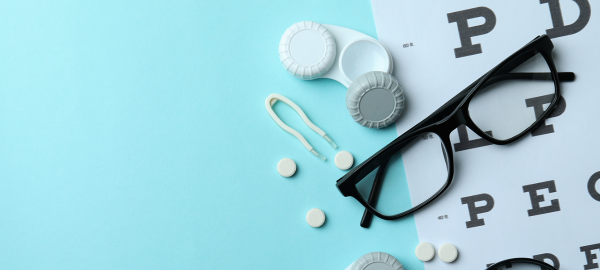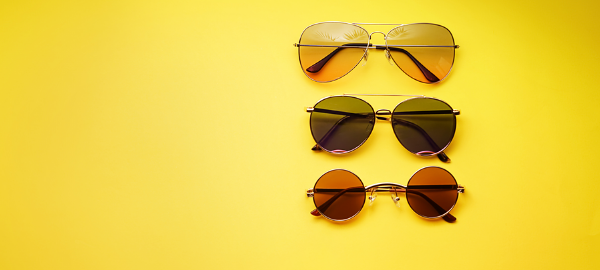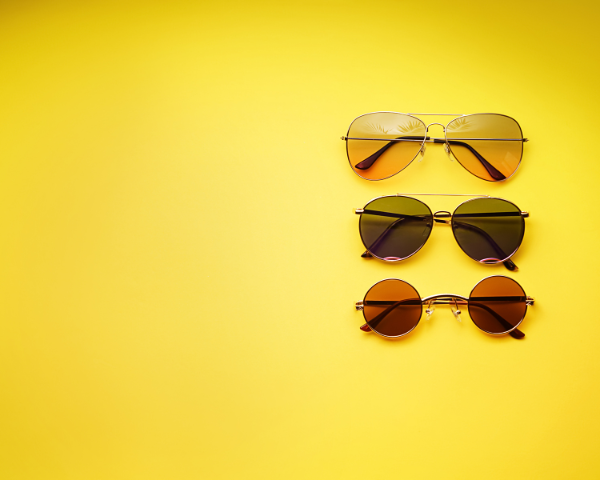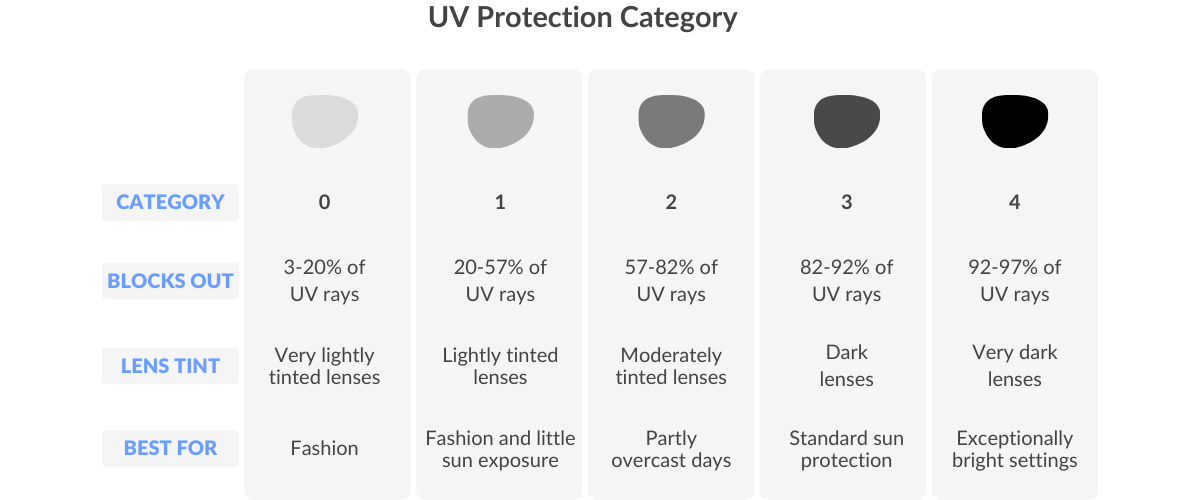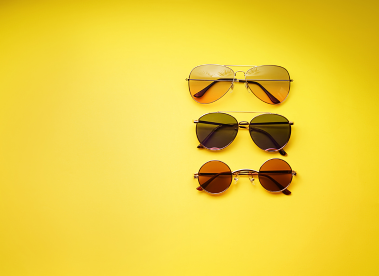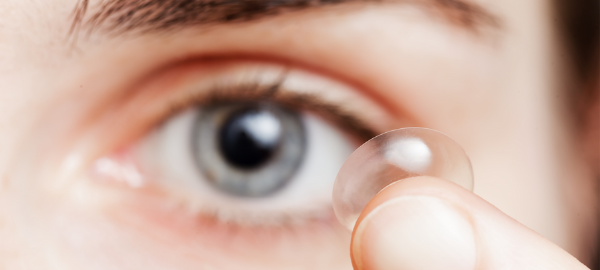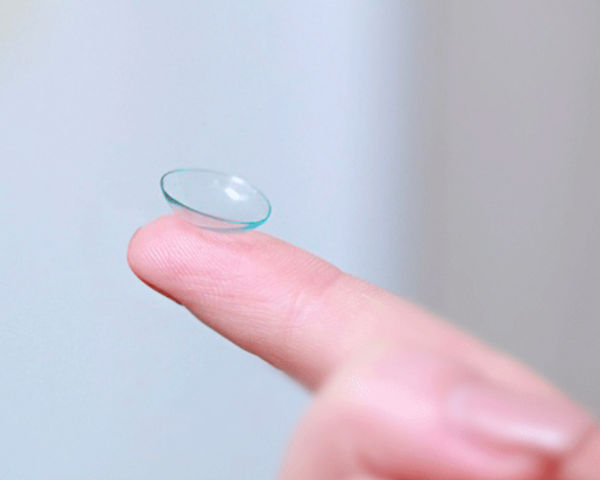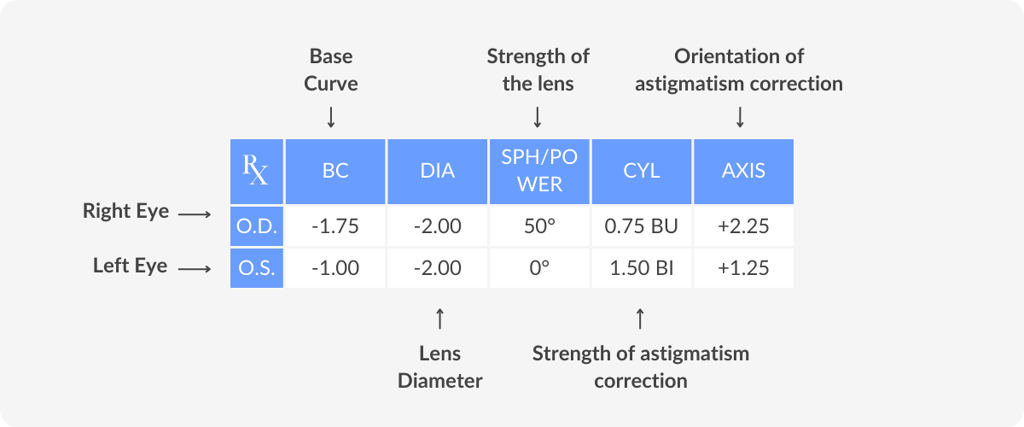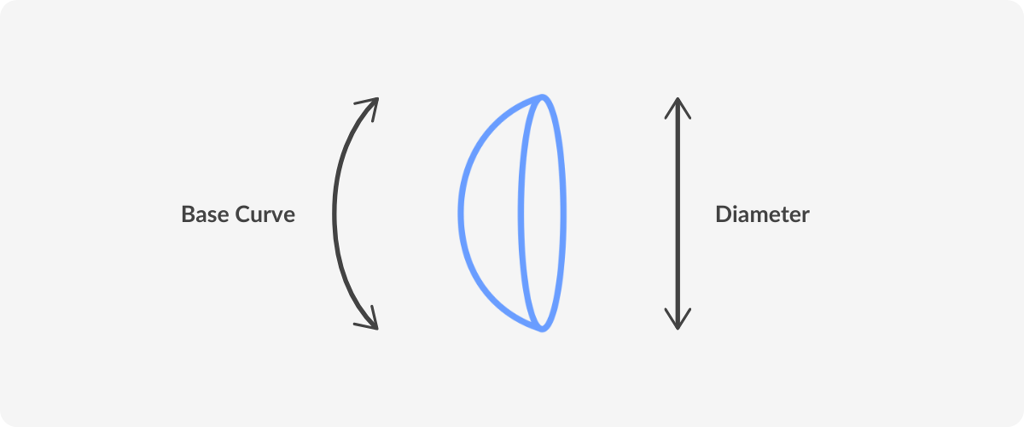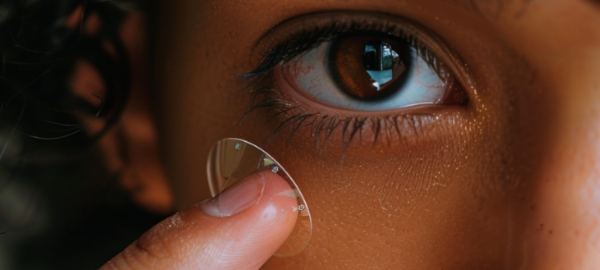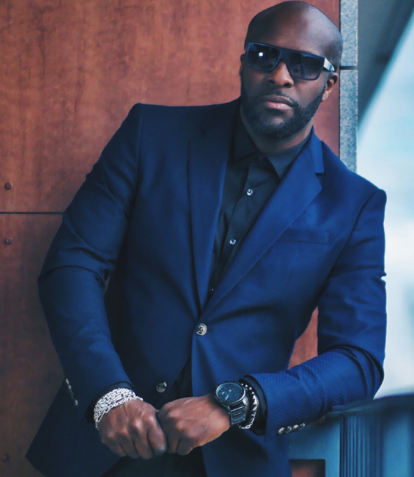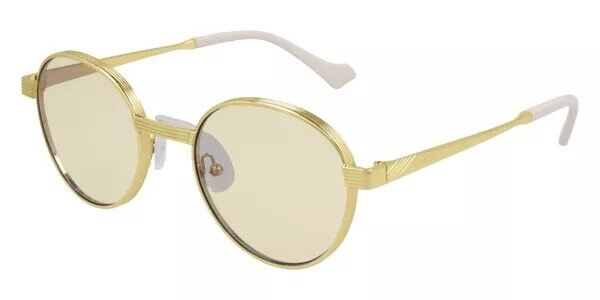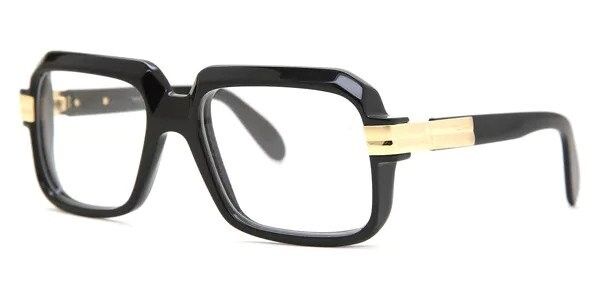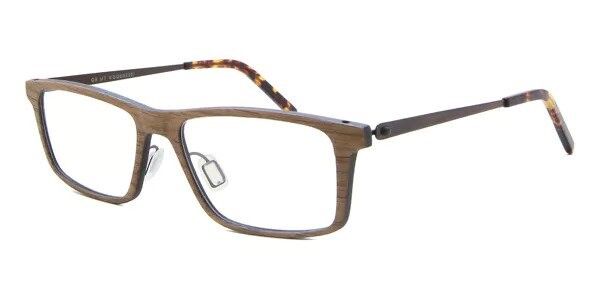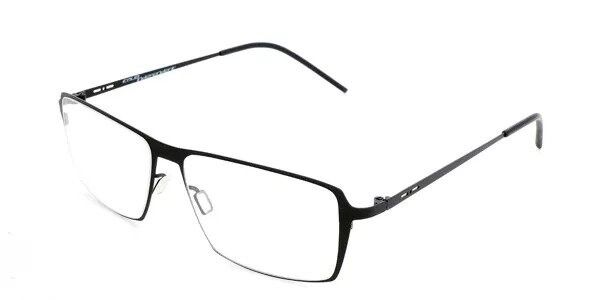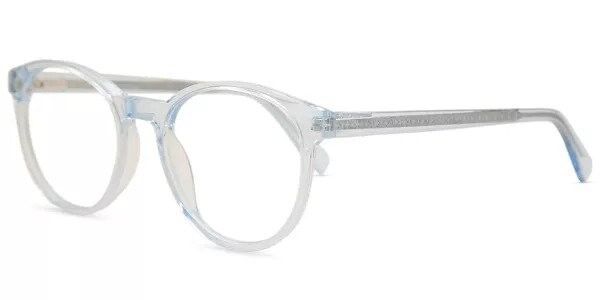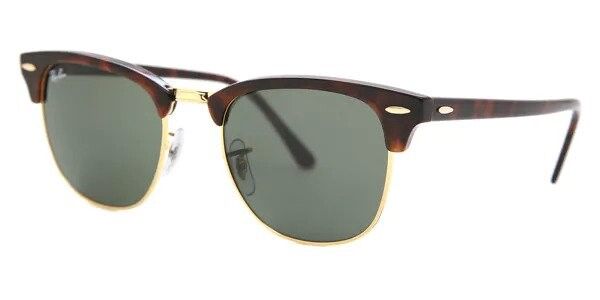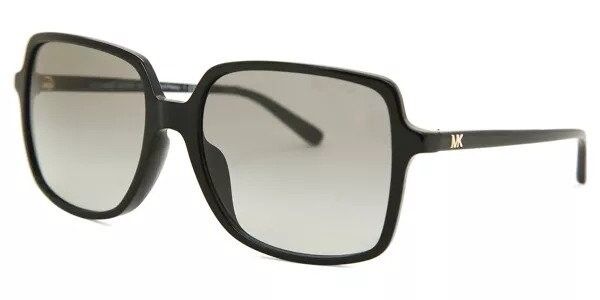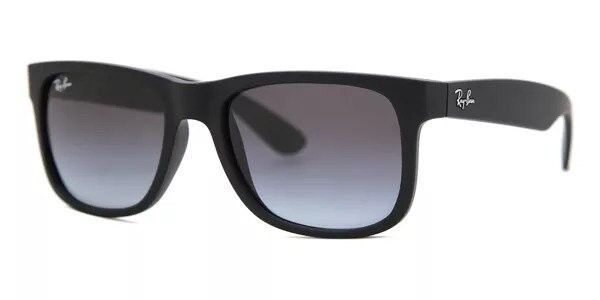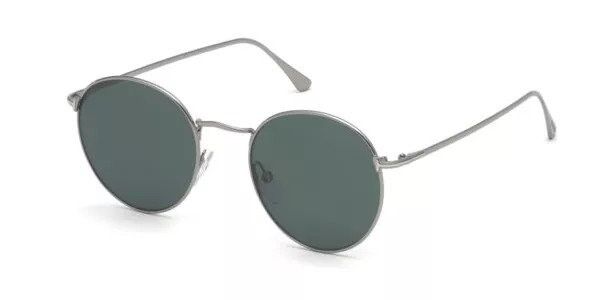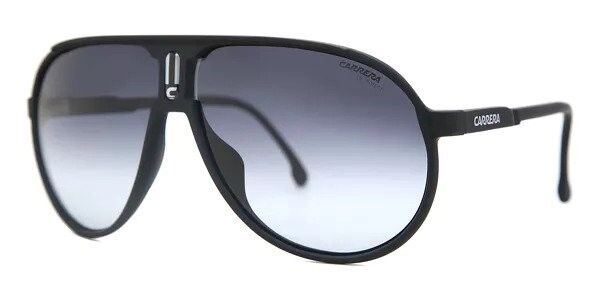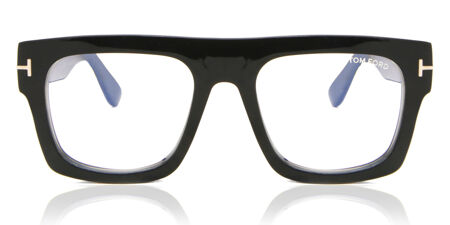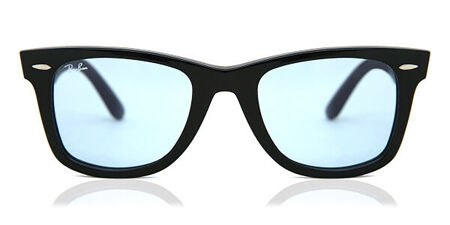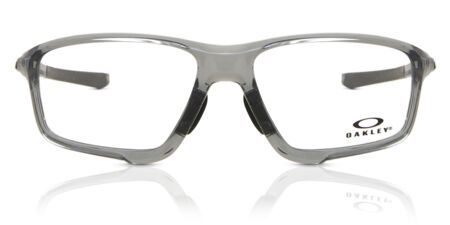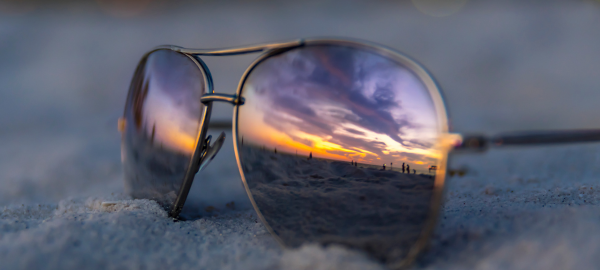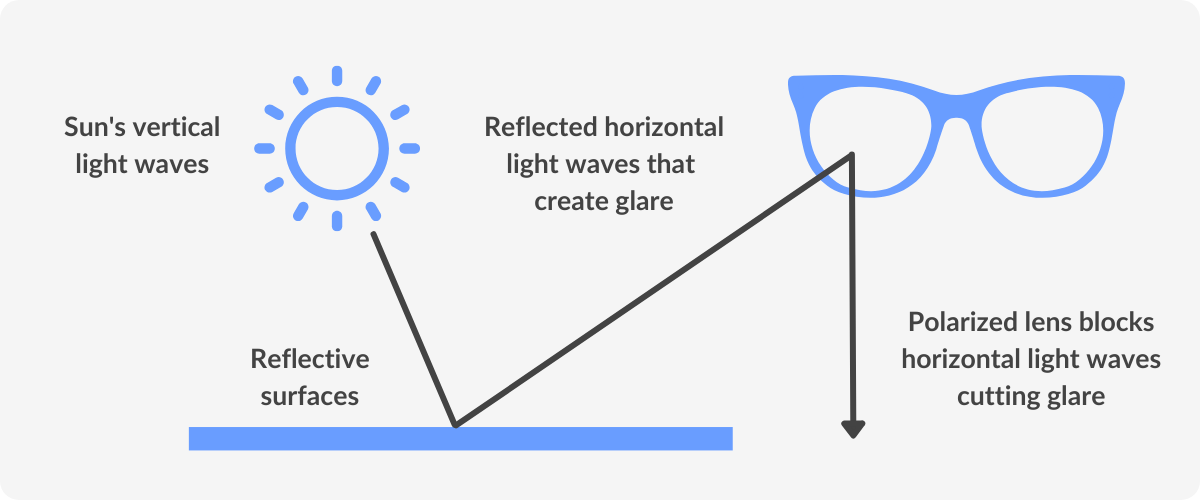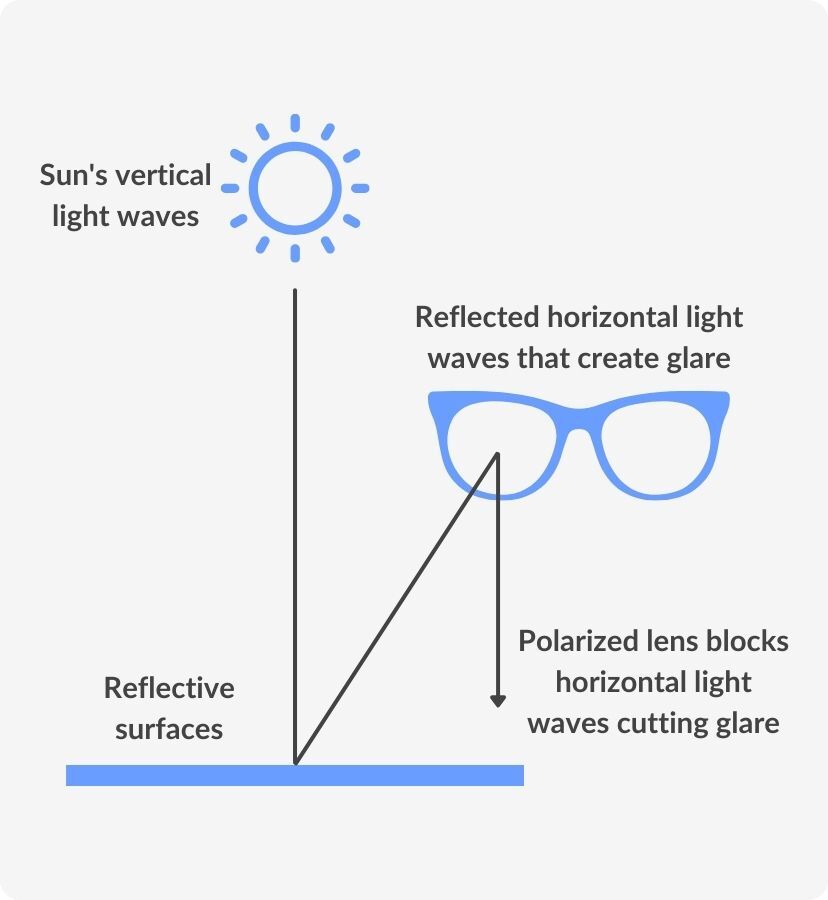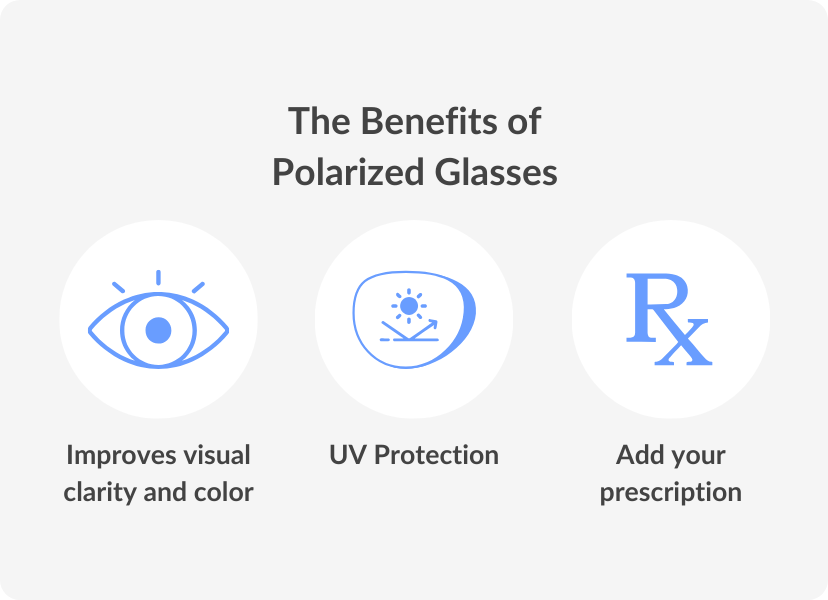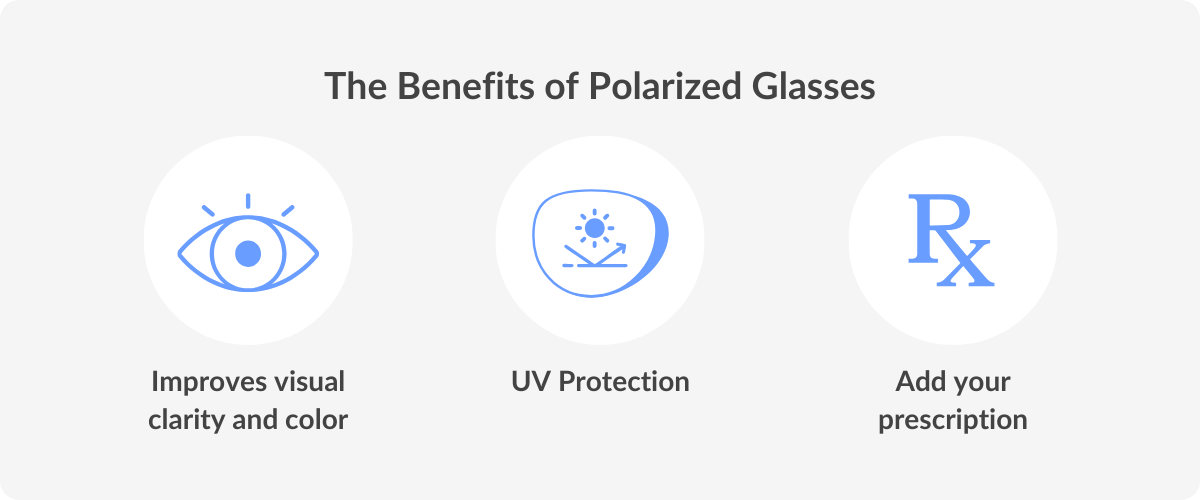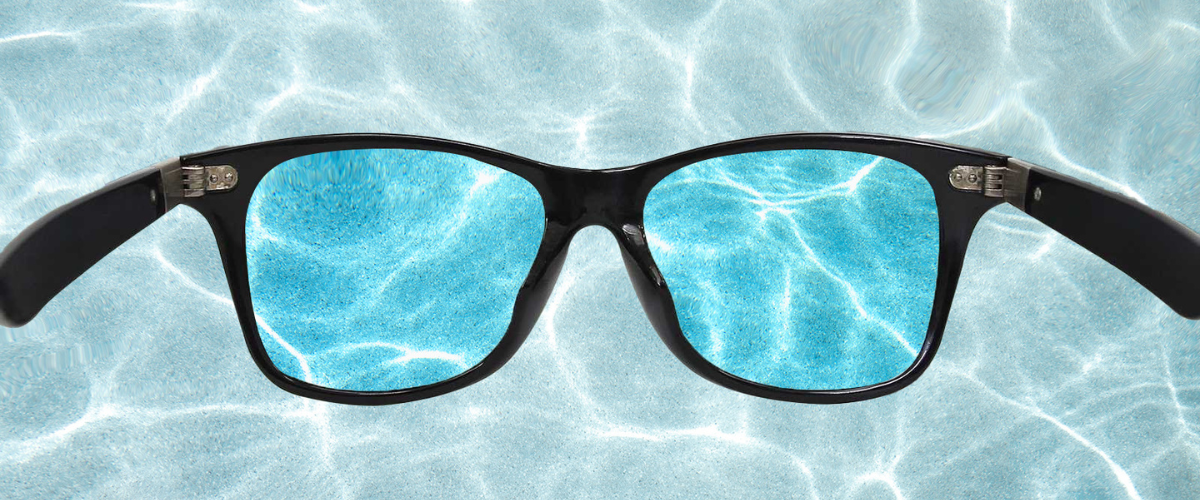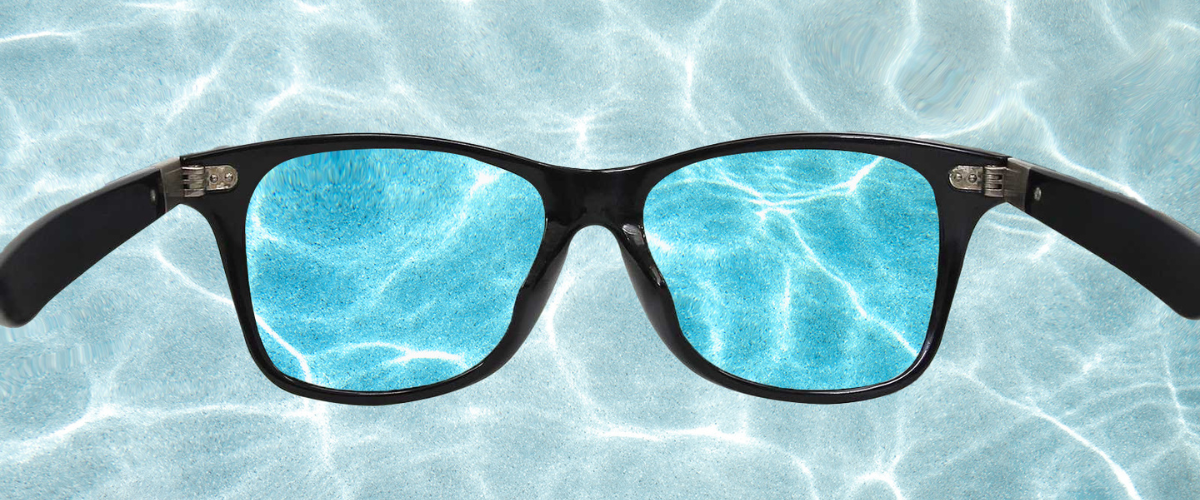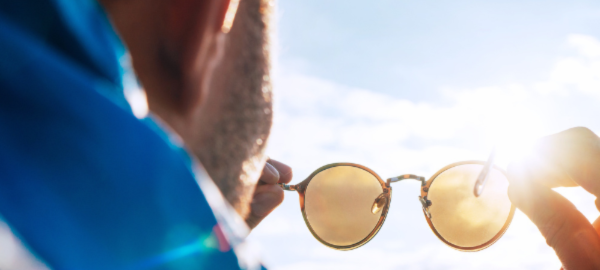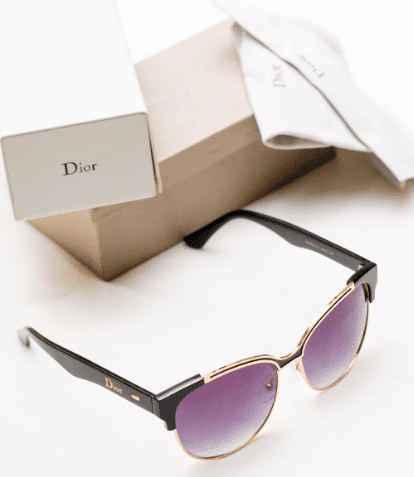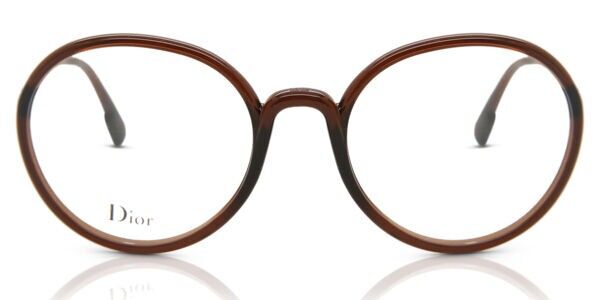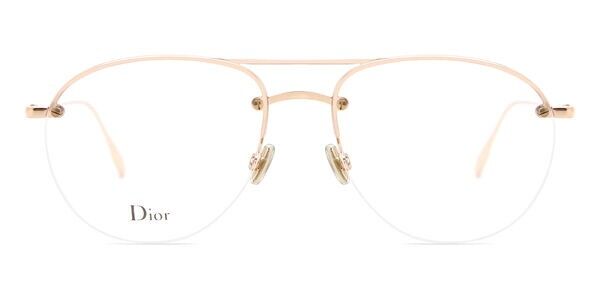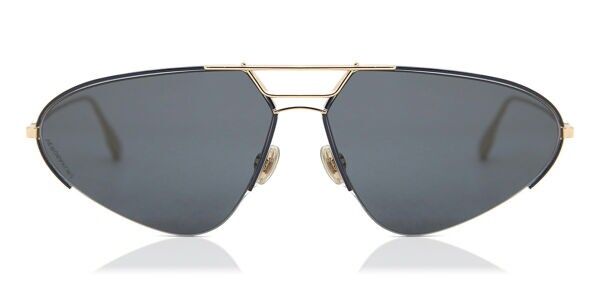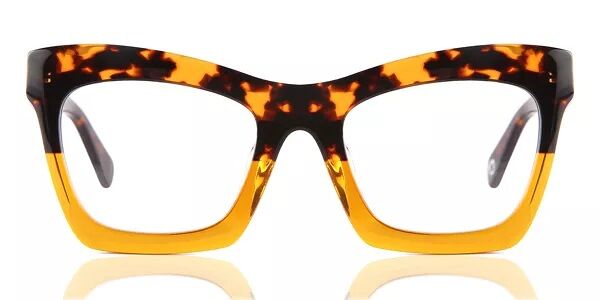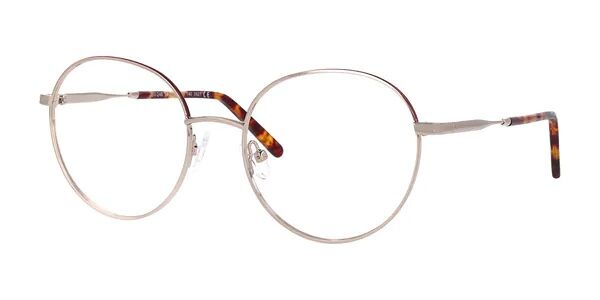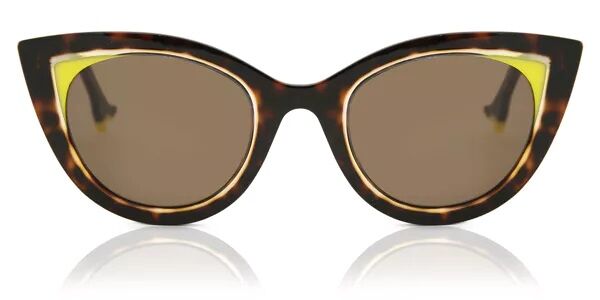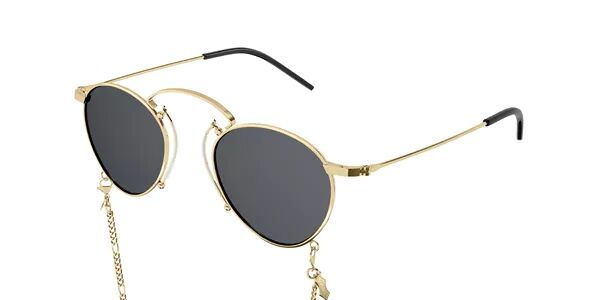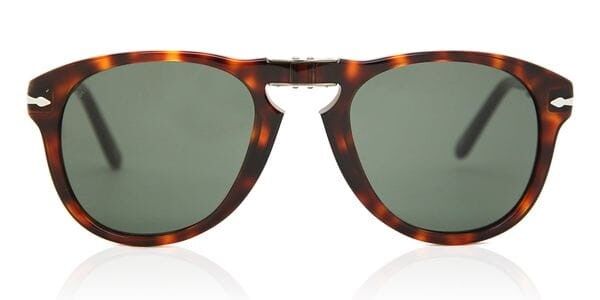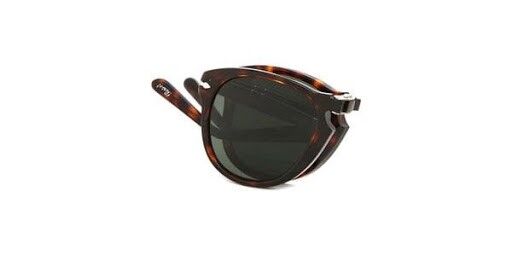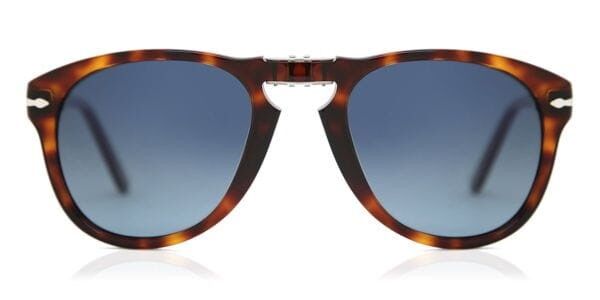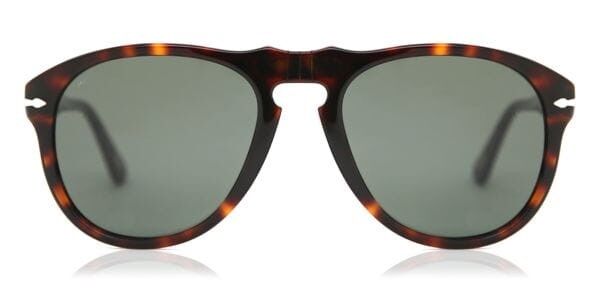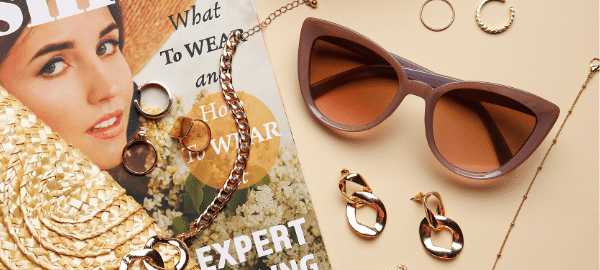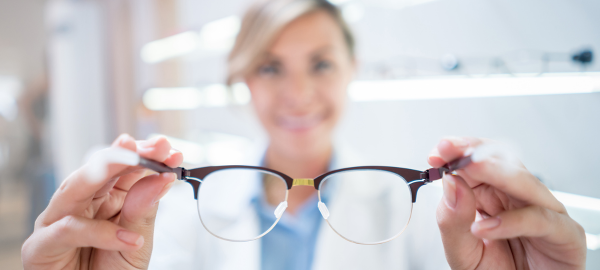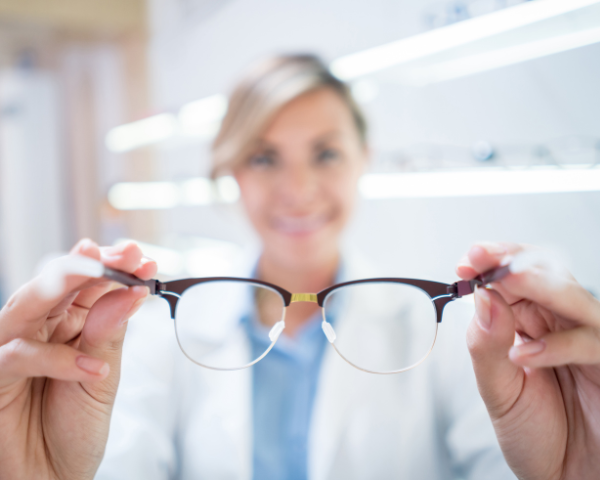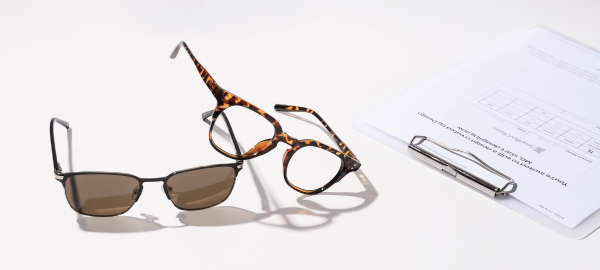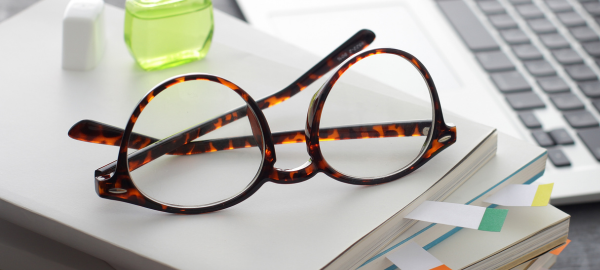Can I Use My Contact Lens Prescription When Ordering Glasses?

Reviewed by
Beck Jinnette
If your vision needs correction, you may be prescribed a glasses prescription or contact lens prescription. This decision is usually made between yourself and your Optician depending on your preference and lifestyle needs.
Many eyeglass wearers and contact wearers wonder if it’s possible to convert a glasses prescription to a contact lens prescription, or vice versa. Though they seem similar, they are actually quite different. Here’s why.
Are glasses prescriptions and contact lens prescriptions the same?
Even though the prescription for glasses vs contact lens prescription may look similar, they are quite different.
Contact lenses and glasses correct refractive errors, such as myopia (nearsightedness), hyperopia (farsightedness), astigmatism (your cornea or lens has a different shape than usual), and presbyopia (a refractive error that generally develops with age).
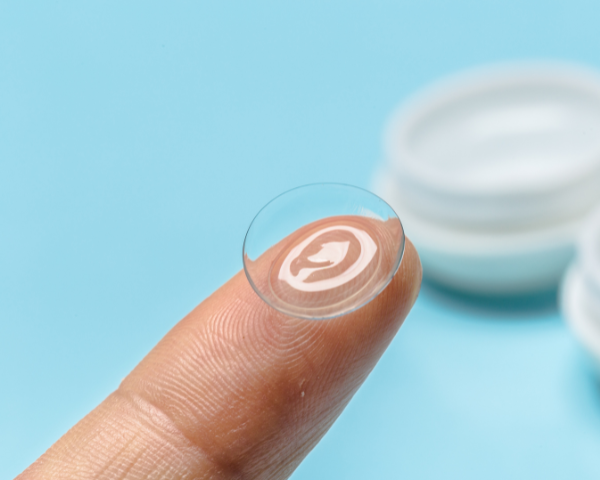
Since prescription glasses sit in front of your eyes, around 12 millimeters away, and contact lenses sit on the surface of the eye, you need two separate tests to determine each lens’ unique measurements.
This means that the parameters specified on your glasses prescription often differ from your contact lens prescription.
DID YOU KNOW?
The first contact lens was designed by Leonardo da Vinci in 1508.
How prescriptions for contacts and glasses differ
After your eye test, you will receive a prescription card specifying the measurements for your prescription lenses. Your glasses prescription and contact lens prescription will be provided separately.
Once you have these prescriptions, you can shop for your glasses or contact lenses online or in-store.
You’ll notice that the information provided on these prescriptions will be different, as they are not the same prescription. Contact lens prescriptions include certain specifications that are not on your glasses prescription, including:
- Base Curve (BC): This measures the curvature of your lens and is based on your eye shape, measured in millimeters.
- Diameter (DIA): This specifies the size of the lens and how the lens fits on your actual eye in terms of width, measured in millimeters.
- Lens material: This includes the material of your contact lens, which can be either hydrogel or silicone.
- Brand manufacturer: Including the name of the contact lens’ brand on your prescription helps with reordering in the future. The ‘brand’ section will specify the measurements and material.
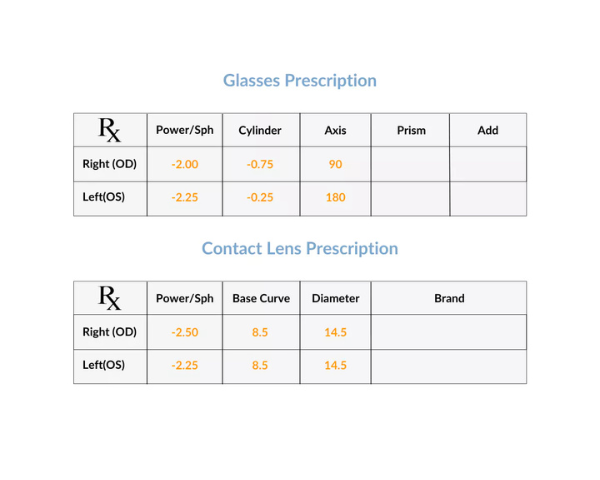
Aside from these, there are other values you can find on a contact or glasses lens prescription.
For example, the power/sph (sphere) indicates the lens power, which can be found on both glasses and contact lens prescriptions.
On glasses prescriptions, you can also find the cylinder (Cyl) and the axis, which respectively indicate the strength of astigmatism and the orientation of the cylinder.
Your contact lens prescription may also include an axis and cylinder if it’s a lens for astigmatism correction or multifocal purposes.
Additionally, if you have multifocal lenses, an ‘ADD’ value will also be present as it’s needed to specify the additional positive power required for the eyes to focus.
Last but not least, the ‘prism’ section will be present in your glasses prescription if you struggle with diplopia (double vision) and need prism glasses.
Can you convert an eyeglasses prescription to a contact lens prescription?
No, it is impossible to convert a glasses prescription to a contact prescription directly.
Furthermore, you cannot convert a contact lens prescription to a glasses prescription. Doctors can prescribe your contact lens prescription after you have completed a contact lens exam.
Can I use my contact lens prescription for glasses?
As well as not being able to convert your prescriptions, you cannot use your glasses prescription to work out your contact lens prescription.

It is important to note that only some people who wear glasses can also wear contact lenses. Therefore, it is recommended you get an eye test for both prescriptions and speak to your eye doctor about your options for vision correction.
Are contact lenses or glasses better?
When choosing between contact lenses or glasses, we recommend you consider your lifestyle, comfort, and budget.
For example, eyeglasses require little cleaning and maintenance, as well as not having to physically touch your eyes which helps avoid the risk of eye infections.
However, contact lenses do not fog up, which is useful when playing sports or in certain weather conditions. That said, contact lenses can also be more expensive than glasses, and not everyone finds them comfortable.
Ultimately, we recommend trying glasses and contact lenses to see which suits your lifestyle best.
Where can I buy affordable glasses and contact lenses online?
You can find affordable glasses or contact lenses online or in-store at your local optician, as long as you have an up-to-date prescription.
You can use our online Lens Scanner to reveal your current glasses prescription in minutes. However, if you haven’t had an eye exam in the last two years, we recommend booking an eye exam to ensure your prescription hasn’t changed.
You will need a separate eye test to determine your contact lens prescription, but you can generally get your contact lens exam performed at the same time as your eye exam so remember to ask for both if you’re unsure which you prefer.

And if you have any doubts about your prescription or the differences about contact lenses and glasses prescriptions, feel free to reach out to one of our certified opticians. They’ll be happy to help and give you advice.
You might also be wondering how long is an eye prescription good for. Eye prescriptions often expire in two years. Your optometrist should include the date of issue and expiration on your prescription.
We recommend always checking your country’s laws regarding eye prescriptions and contacting your optician for regular check-ups.
Related articles
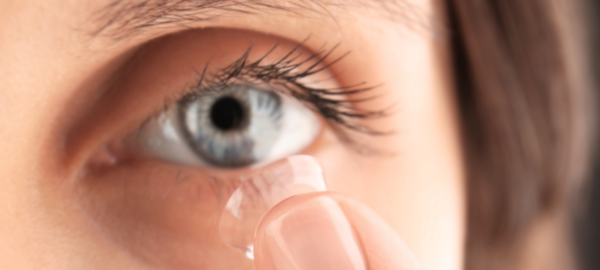
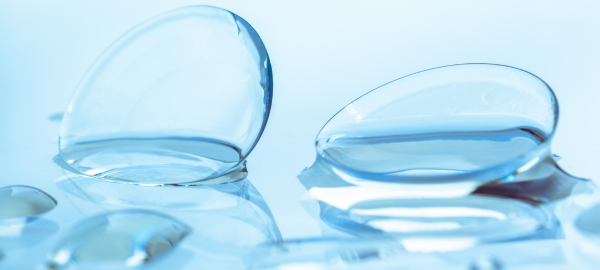
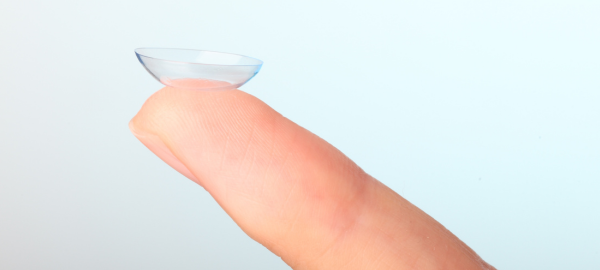
Related articles










































